
Lawachara National Park: A Lush Green Haven in Bangladesh
Explore the natural and cultural wonders of Lawachara National Park, Bangladesh's lush green paradise, teeming with exotic wildlife and indigenous heritage.
Nestled in the northeastern region of Bangladesh, Lawachara National Park is a verdant sanctuary teeming with wildlife and natural beauty. This sprawling reserve, established in 1996, covers approximately 1,250 hectares and is home to an array of exotic flora and fauna. Visitors to the park can expect to encounter rare species such as the hoolock gibbon, the only ape found in Bangladesh, as well as an impressive variety of birds and butterflies. The park's dense, tropical forest provides a refreshing escape from the hustle and bustle of urban life. Trekking through the well-marked trails, tourists can immerse themselves in the sights and sounds of nature, with the added thrill of spotting wildlife in their natural habitat. The park also offers guided tours, where knowledgeable guides share insights about the unique ecosystem and the ongoing conservation efforts. Lawachara National Park is not just about wildlife; it is also a cultural treasure. The park is home to indigenous communities, including the Khasia and Tripura tribes, who have lived harmoniously with nature for generations. Visitors have the opportunity to learn about their way of life, traditional crafts, and customs, adding a rich cultural dimension to their visit. Whether you're a nature enthusiast, a bird watcher, or a cultural explorer, Lawachara National Park promises an unforgettable experience.
Local tips in Lawachara National Park
- Visit early in the morning to maximize wildlife sightings and enjoy the cool, pleasant weather.
- Wear comfortable trekking shoes and light, breathable clothing suitable for a tropical climate.
- Hire a local guide for a more informative and enriching experience of the park's ecosystem and cultural heritage.
- Carry insect repellent to protect yourself from mosquitoes and other insects.
- Respect the local communities and their customs; always ask for permission before taking photographs.
Lawachara National Park: A Lush Green Haven in Bangladesh
Nestled in the northeastern region of Bangladesh, Lawachara National Park is a verdant sanctuary teeming with wildlife and natural beauty. This sprawling reserve, established in 1996, covers approximately 1,250 hectares and is home to an array of exotic flora and fauna. Visitors to the park can expect to encounter rare species such as the hoolock gibbon, the only ape found in Bangladesh, as well as an impressive variety of birds and butterflies. The park's dense, tropical forest provides a refreshing escape from the hustle and bustle of urban life. Trekking through the well-marked trails, tourists can immerse themselves in the sights and sounds of nature, with the added thrill of spotting wildlife in their natural habitat. The park also offers guided tours, where knowledgeable guides share insights about the unique ecosystem and the ongoing conservation efforts. Lawachara National Park is not just about wildlife; it is also a cultural treasure. The park is home to indigenous communities, including the Khasia and Tripura tribes, who have lived harmoniously with nature for generations. Visitors have the opportunity to learn about their way of life, traditional crafts, and customs, adding a rich cultural dimension to their visit. Whether you're a nature enthusiast, a bird watcher, or a cultural explorer, Lawachara National Park promises an unforgettable experience.
When is the best time to go to Lawachara National Park?
Iconic landmarks you can’t miss
Bhawal National Park, Gazipur
Experience the lush beauty and tranquility of Bhawal National Park, a perfect escape into nature near Dhaka, Bangladesh.

Satchari National Park
Satchari National Park: Explore lush forests, diverse wildlife, and stunning hiking trails in Bangladesh's natural paradise.
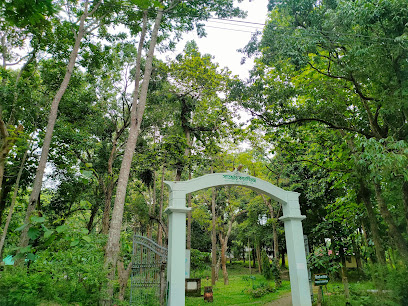
Madhabpur Lake
Experience the tranquility of Madhabpur Lake, a hidden gem in Bangladesh offering stunning views and a serene escape into nature.

Baikka Beel
Explore the enchanting Baikka Beel, a wetland sanctuary in Bangladesh, brimming with vibrant wildlife and breathtaking natural beauty.

Lawachara National Park Gate
Explore the lush landscapes and rich biodiversity of Lawachara National Park, a gem of Bangladesh's natural heritage.

Rema Kalenga Reserved Forest
Explore the captivating wildlife and stunning landscapes of Rema Kalenga Reserved Forest, a national park in Bangladesh that celebrates nature's beauty.

লাউয়াছড়া ফরেস্ট
Explore the breathtaking natural beauty and rich cultural heritage of Lawachara National Park, a historical gem in Bangladesh.
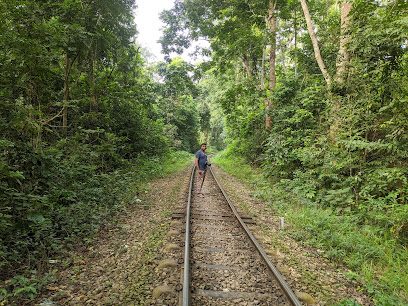
লাউয়াছড়া খাসিয়া পল্লি
Explore the lush beauty and rich cultural heritage of Laldia Khasia Palli, a unique tourist attraction showcasing the vibrant life of the Khasia community.
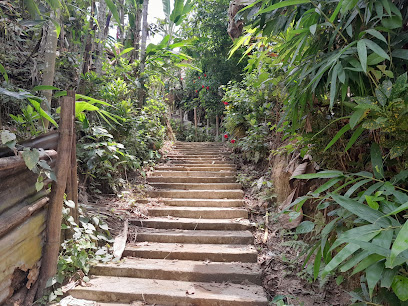
Lawachara forest
Explore the enchanting Lawachara National Forest, a hidden gem in Bangladesh, rich in biodiversity and stunning landscapes.

Unmissable attractions to see
Sreemangal Martyr's Memorial 71
Explore Sreemangal Martyr's Memorial 71, a serene park commemorating the heroes of Bangladesh's Liberation War amidst lush landscapes.

Madhabpur Lake
Explore the tranquil beauty of Madhabpur Lake, a serene park in Bangladesh perfect for relaxation, boating, and enjoying nature's splendor.
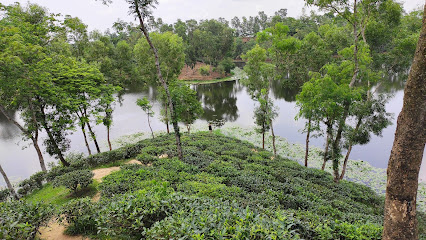
Shitesh Babu's Zoo
Experience the thrill of wildlife and conservation at Shitesh Babu's Zoo in Sreemangal, a must-visit destination for animal lovers and families.

CHOWMUHONA, SREEMANGAL. (চৌমুহনা শ্রীমঙ্গল)
Explore Chowmuhona, Sreemangal - a lush paradise of tea gardens and vibrant culture in the heart of Bangladesh's tea capital.
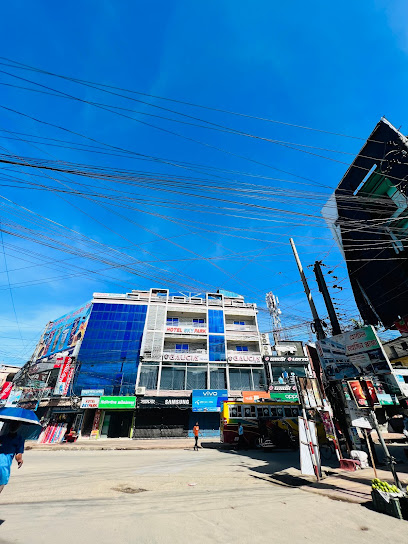
দার্জিলিং টিলা (Darjeeling Tila)
Discover the serene beauty and rich culture of Darjeeling Tila, a hidden gem in Ashidron UP perfect for nature lovers and adventure seekers.

বাইক্কা বিল ওয়াচ টাওয়ার Baikka Beel Watch Tower
Explore the breathtaking views and rich wildlife at Baikka Beel Watch Tower - a serene escape in Bangladesh's picturesque wetlands.

কালীঘাট বেইলী ব্রীজ
Explore Kaliraj Beel, a tranquil tourist attraction in Bangladesh, perfect for nature lovers and birdwatching enthusiasts seeking a serene escape.
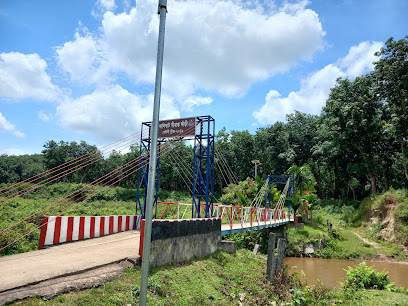
Laltila/ Lalpahar লাল পাহাড়
Explore Laltila, a serene tourist attraction in Ashidron UP, where lush landscapes meet vibrant local culture for an unforgettable travel experience.

Rubber Garden
Explore the lush landscapes of Rubber Garden in Sreemangal, a captivating tourist attraction showcasing the art of rubber cultivation amidst natural beauty.

আলিয়াছড়া (গুলবাহার) খাসিয়া পুঞ্জি
Experience the natural beauty and rich culture of Alifazha (Kunubahar) Kasita Punajji, a breathtaking destination in Bangladesh for every traveler.

বিলাসছড়া লেক
Discover the serene charm of Bilashchara Lake, a hidden gem in Bangladesh perfect for nature lovers and adventure seekers alike.

পদ্মছড়া চা বাগান লেক
Discover the serene beauty of PadmaChara Park, a tranquil oasis in Bangladesh perfect for relaxation, picnics, and nature walks.
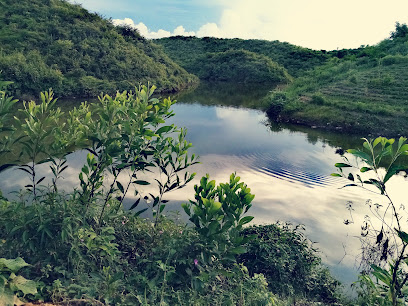
হাইল হাওড়
Experience the rich culture and breathtaking landscapes of হাইল হাহড়, a must-visit tourist attraction in Bangladesh.

Vurvuria Lake
Experience the tranquil beauty of Vurvuria Lake, surrounded by lush tea gardens in Bangladesh – a serene escape for nature lovers.
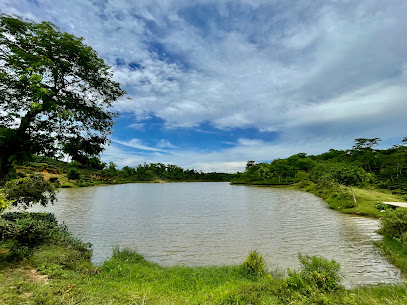
Heed Lake
Discover the serene beauty of Heed Lake, a tranquil park in Bangladesh, perfect for relaxation, picnics, and nature exploration.
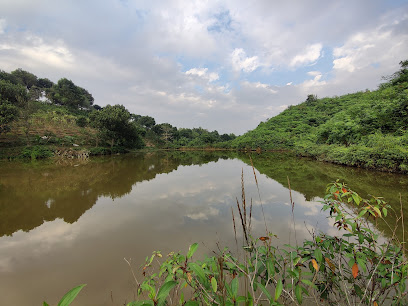
Essential places to dine
Pach Bhai Restaurant
Experience authentic Bangladeshi breakfast at Pach Bhai Restaurant in Sylhet - where every meal is a celebration of flavor.

Kolkata Kacchi Ghor
Discover the authentic taste of Bangladesh at Kolkata Kacchi Ghor – home to exquisite biryani and vibrant culinary traditions.

Jatra Biroti
Discover authentic Bengali flavors at Jatra Biroti in Dhaka – a top choice for delicious brunches and exquisite dining experiences.

Thai Emerald
Discover the essence of Thailand at Thai Emerald - Dhaka's premier destination for authentic Thai cuisine with an unforgettable dining experience.

Pinewood Cafe + Kitchen
Experience the perfect blend of comfort food and specialty coffee at Pinewood Cafe + Kitchen in Dhaka's Gulshan district.

Absolute BBQ BD
Discover the rich flavors of barbecue at Absolute BBQ BD – where every meal is a celebration of taste in Dhaka.

Bird's Eye Roof Top Restaurant and Convention Hall
Experience exquisite Chinese cuisine with stunning views at Bird's Eye Roof Top Restaurant in Dhaka - where every meal is a feast for the senses.

Thai Emerald, Dhaka.
Discover the authentic taste of Thailand at Dhaka's exquisite Thai Emerald restaurant – where flavor meets elegance.

Western Grill (ওয়েস্টার্ন গ্রিল)
Experience delicious fast food with a twist at Western Grill in Dhaka – where local flavors meet global favorites.

Bhalogari Cafe
Experience the exquisite fusion of Italian and Japanese cuisine at Bhalogari Cafe in Dhaka's SKS shopping mall.

Zaytun Restaurant
Discover authentic Bangladeshi flavors at Zaytun Restaurant in Dhaka, where tradition meets modern dining in a captivating setting.

China Kitchen
Experience the vibrant fusion of Chinese, Bangladeshi, and Thai cuisines at China Kitchen in Dhaka's Rose View Plaza.

Chef's Rooftop
Experience exquisite cuisine and breathtaking views at Chef's Rooftop in Dhaka – where every meal becomes a memorable occasion.

Sami Yami Chinese Bangla Restaurant & Sweetmeat
Experience the delightful fusion of Chinese and Bangladeshi flavors at Sami Yami Restaurant on Kulaura - Barlekha Highway.
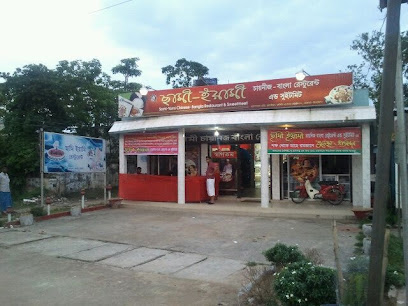
Elements Global Dining, InterContinental Dhaka
Experience a world of flavors at Elements Global Dining in InterContinental Dhaka – where every bite tells a story.

Markets, malls and hidden boutiques
Lawachara National Park
Explore the lush landscapes and diverse wildlife of Lawachara National Park, a natural paradise in Kamalganj, Bangladesh.

Pahari Gift Corner
Discover the vibrant essence of Sreemangal at Pahari Gift Corner, your gateway to unique Bangladeshi souvenirs and local handicrafts.

ইমাদ স্টোর
Explore the heart of Kamalganj at ইমাদ স্টোর, where local culture meets unique shopping treasures.

জুবায়ের স্টোর(Jubayer Store)
Explore Jubayer Store: Your Gateway to Authentic Bangladeshi Groceries and Culinary Treasures.

Camellia Handicraft's & Monipuri Fabrics
Explore the rich heritage of Bangladesh through exquisite handmade crafts and Monipuri fabrics at Camellia Handicraft's, a treasure trove for unique souvenirs.
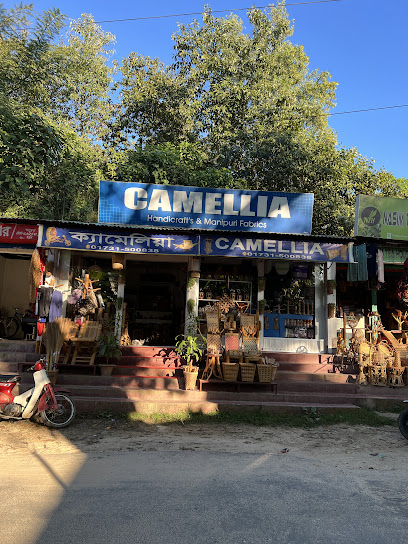
কাওছার আহমেদ ষ্টোর
Discover unique local crafts and authentic Bangladeshi products at কাওছার আহমেদ ষ্টোর, a vibrant shopping destination in Bangladesh.
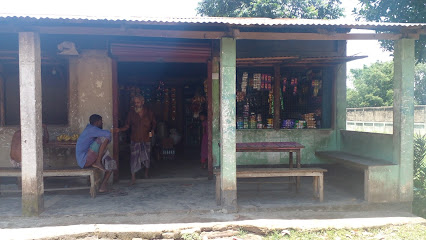
TANHA STORE
Explore the vibrant TANHA STORE in Sreemangal for fresh produce and local flavors that capture the essence of Bangladesh.

সুলতানা ভেরাইটিজ স্টোর
Discover unique local products and vibrant culture at Sultana Variety Store in Kamalganj, the perfect shopping destination for tourists.

হামিদা এন্ড আবিদা ষ্টোর
Explore Hamida and Abida Store, your destination for unique home goods and local craftsmanship in the heart of the region.

নয়ন ষ্টোর
Explore Kamalganj's Nayun Store for unique local crafts and everyday essentials that embody the rich cultural heritage of Bangladesh.

মেসার্স যাদব ভেরাইটিজ ষ্টোর
Explore the vibrant local culture at M/s Yadav Variety Store in Sreemangal, offering unique snacks and souvenirs that capture the spirit of the region.

গাউছিয়া লাইব্রেরী এন্ড ষ্টেশনারী
Discover the charm of Gauchia Library and Stationery, where literature meets local culture in the heart of Kamalganj.

মায়ের দোয়া
Discover authentic Bangladeshi handicrafts at মায়ের দোয়া in Lauyachara, where local craftsmanship meets vibrant culture.

লতিফ স্টোর
Discover authentic Bangladeshi craftsmanship at লতিফ স্টোর, where every item tells a story of rich tradition and artistry.

সপ্ন টি এন্ড গিফট কর্ণার
Discover the essence of Sreemangal at Sopno Tea and Gift Corner, where exquisite teas and unique gifts await every traveler.
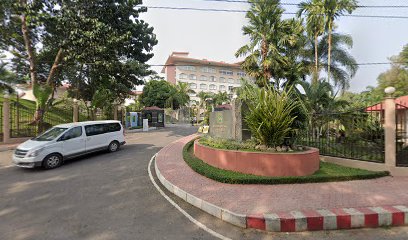
Essential bars & hidden hideouts
GRAND TAJ RESTAURENT& PARTY CENTER গ্রান্ড তাজ রেষ্টুরেন্ট & পার্টি সেন্টার
Savor the rich flavors of Bangladesh at Grand Taj Restaurant & Party Center, a top dining destination in Sreemangal for unforgettable culinary experiences.

Pach Vai Restaurant পাঁচ ভাই রেস্টুরেন্ট
Experience the heart of Bengali cuisine at Pach Vai Restaurant, offering authentic flavors in a cozy atmosphere in Sreemangal.

Asian Eco Cafe & Restaurant
Experience a unique blend of sustainable dining and delicious Asian cuisine at Asian Eco Cafe & Restaurant in the heart of Sreemangal.
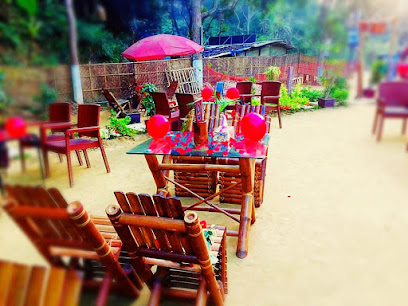
ভাই ভাই হোটেল এন্ড রেস্টুরেন্ট Bhai Bhai Hotel & Restaurant
Experience the authentic flavors of Bangladesh at Bhai Bhai Hotel & Restaurant in Sreemangal, where delicious food meets warm hospitality.
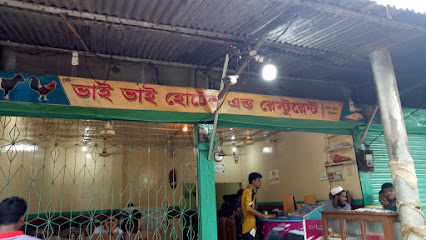
বৃষ্টি বিলাস খাবার ঘর
Discover the vibrant flavors of Bangladesh at Borshti Bilash Khabar Ghor, a must-visit restaurant in Sreemangal offering authentic local cuisine.

Raju Restaurant রাজু রেস্টুরেন্ট
Experience authentic Bangladeshi cuisine at Raju Restaurant, a charming eatery near Grand Sultan Resort, perfect for food lovers.

রিংকু ষ্টোর
Unwind at রিংকু ষ্টোর, a vibrant bar in Sindurkhan UP offering a lively atmosphere, delicious drinks, and a taste of local culture.

কাঠাল পয়েন্ট
Discover the vibrant atmosphere and refreshing drinks at Katahal Point, a must-visit bar for an unforgettable night out.

Kureghor resturent and fuska house
Discover the delights of traditional Bangladeshi cuisine at Kureghor Restaurant and Fuska House, a must-visit for food lovers in Balishira Pahar.

লিটনের পাট্টা(মদের দোকান)
Discover the vibrant nightlife at Liton's Patta, a local bar in Bangladesh offering a cozy atmosphere and a diverse drink selection for tourists.

নন্দনপুর কাশফুল
Experience the tranquil ambiance and local culture at Nandonpur Kashful, a hidden bar gem in Bangladesh.

E-Cafe &Juice Bar-2
Experience the refreshing atmosphere and delicious drinks at E-Cafe & Juice Bar in Sreemangal, the perfect break after exploring the tea gardens.

Shawon
Experience the vibrant nightlife at Shawon, a bar in Tikria offering a blend of local and international drinks in a unique ambiance.

দেশী মদের দোকান
Discover the vibrant atmosphere of Deshi Modder Dokan, a bar that celebrates Bangladeshi culture with unique drinks and local entertainment.

Sourob
Discover the lively atmosphere of Sourob in Brahmanbazar, a must-visit bar for tourists seeking local flavors and a vibrant social scene.

Local Phrases about Lawachara National Park
-
- Helloহ্যালো
[helo] - Goodbyeবিদায়
[bidae] - Yesহ্যাঁ
[ha] - Noনা
[na] - Please/You're welcomeদয়া করে
[doya kore] - Thank youধন্যবাদ
[dhonobad] - Excuse me/Sorryদুঃখিত
[dukkhit] - How are you?তুমি কেমন আছো?
[tumi kemon asho?] - Fine. And you?ভাল। আর তুমি?
[bhal. ar tumi?] - Do you speak English?তুমি ইংরেজি কথা বলতে পারো?
[tumi ingreji kotha bolte paro?] - I don't understandআমি বুঝিনা
[ami bujhina]
- Helloহ্যালো
-
- I'd like to see the menu, pleaseমেনু দেখতে চাই
[menu dekhte chai] - I don't eat meatআমি মাংস খাই না
[ami mangsh khai na] - Cheers!চিয়ার্স!
[cheers!] - I would like to pay, pleaseদয়া করে মন্তব্য করুন
[doya kore montobyo korun]
- I'd like to see the menu, pleaseমেনু দেখতে চাই
-
- Help!সাহায্য!
[sahayyo!] - Go away!চলে যাও!
[chole jao!] - Call the Police!পুলিশকে কল করুন!
[polishke kol korun!] - Call a doctor!ডাক্তারকে কল করুন!
[daktarke kol korun!] - I'm lostআমি হারানো
[ami harano] - I'm illআমি অসুস্থ
[ami osustho]
- Help!সাহায্য!
-
- I'd like to buy...আমি ... কিনতে চাই
[ami ... kinte chai] - I'm just lookingআমি কেবল দেখছি
[ami kebol dekhchi] - How much is it?এটা কত টাকা?
[eta kot taka?] - That's too expensiveএটা খুব মহঁগ
[eta khub mohong] - Can you lower the price?দাম কমানো সম্ভব?
[dam kamonu somvob?]
- I'd like to buy...আমি ... কিনতে চাই
-
- What time is it?এখন কত বাজে?
[ekhon kot baje?] - It's one o'clockএকটা বাজে
[ekta baje] - Half past (10)দশের পাঁচটা
[dasher panchta] - Morningসকাল
[shokal] - Afternoonদুপুর
[dupur] - Eveningসন্ধ্যা
[shondhya] - Yesterdayগতকাল
[gotokal] - Todayআজ
[aj] - Tomorrowআগামীকাল
[agamikal] - 1এক
[ek] - 2দুই
[dui] - 3তিন
[tin] - 4চার
[char] - 5পাঁচ
[pach] - 6ছয়
[chhoy] - 7সাত
[shat] - 8আট
[at] - 9নয়
[noy] - 10দশ
[dosh]
- What time is it?এখন কত বাজে?
-
- Where's a/the...?... কোথায়?
[... kothay?] - What's the address?ঠিকানাটা কি?
[thikanata ki?] - Can you show me (on the map)?আপনি আমাকে দেখাতে পারবেন (ম্যাপে)?
[apni amake dekhate parben (mape)?] - When's the next (bus)?পরের (বাস) কখন?
[porer (bus) kohon?] - A ticket (to ....)(...) একটি টিকেট
[(...) ekto ticket]
- Where's a/the...?... কোথায়?
History of Lawachara National Park
-
Lawachara National Park, established in 1996, is a significant conservation area in the Sylhet region of Bangladesh. It spans 1,250 hectares and serves as an important sanctuary for a diverse range of flora and fauna, including several endangered species. The park's establishment was a crucial step in preserving the region's rich biodiversity, which had been under threat from deforestation and human encroachment.
-
The Khasi community, an indigenous ethnic group, has lived in and around the Lawachara National Park for centuries. They have a deep connection to the land and its resources, practicing traditional shifting cultivation and relying on the forest for their livelihood. The Khasi people have a unique culture and language, and their presence adds a rich cultural dimension to the park.
-
During the British colonial period, the area that is now Lawachara National Park was heavily logged for its valuable timber. The British established tea gardens in the surrounding region, leading to significant ecological changes. Some remnants of colonial-era infrastructure, such as old railway tracks, can still be seen in the park, serving as historical markers of this period.
-
The Bangladesh Forest Department has played a pivotal role in the conservation efforts of Lawachara National Park. Since the park's establishment, the department has implemented various initiatives to protect the forest and its wildlife. These efforts include anti-poaching measures, reforestation projects, and community engagement programs that involve local residents in conservation activities.
-
Lawachara National Park is renowned for its rich biodiversity. It is home to approximately 460 species of plants, 167 species of birds, and numerous mammals, reptiles, and amphibians. Notably, the critically endangered Western Hoolock Gibbon, Bangladesh's only ape species, resides within the park. The park's diverse ecosystems, ranging from tropical evergreen forests to bamboo groves, provide habitats for a wide array of wildlife.
-
In recent years, Lawachara National Park has become a popular destination for ecotourism and cultural tourism. Visitors can experience the natural beauty of the park through guided treks and wildlife tours. Additionally, cultural initiatives have been developed to showcase the traditions and lifestyles of the indigenous communities, providing tourists with an immersive experience of the region's cultural heritage.
-
Climate change poses a significant threat to Lawachara National Park, affecting the delicate balance of its ecosystems. Changes in temperature and precipitation patterns have impacted the flora and fauna, leading to shifts in species distribution and behavior. Conservationists are working to mitigate these effects through adaptive management strategies and by raising awareness about the importance of protecting the park in the face of climate change.
Lawachara National Park Essentials
-
Lawachara National Park is located in the Moulvibazar District of Sylhet Division in northeastern Bangladesh. The nearest major city is Sylhet, and the closest town is Sreemangal. The easiest way to reach Lawachara is by train or bus from Dhaka to Sreemangal. Trains such as the Parabat Express and Jayantika Express have regular services from Dhaka to Sreemangal, taking approximately 4-5 hours. From Sreemangal, you can hire a CNG auto-rickshaw or a taxi to reach the park, which is about 8 kilometers away.
-
Within Lawachara National Park, the best way to explore is on foot, as walking trails are well-marked and provide an immersive experience of the park's natural beauty. For longer trips around the Sreemangal area, local transport options include CNG auto-rickshaws, cycle-rickshaws, and taxis. Renting a bicycle is also a popular option for exploring the nearby tea gardens and villages.
-
The official currency in Bangladesh is the Bangladeshi Taka (BDT). It's advisable to carry cash, as most small vendors and local transport do not accept credit cards. ATMs are available in Sreemangal, but it's wise to withdraw sufficient cash before heading into the park. Major hotels and some restaurants in Sreemangal may accept credit cards, but it's not guaranteed.
-
Lawachara National Park is generally safe for tourists. However, it's important to take standard precautions. Avoid walking alone at night, and be cautious with your belongings in crowded areas like markets and bus stations. There are no specific high-crime areas targeting tourists in or around the park, but always stay vigilant and aware of your surroundings.
-
In case of an emergency, dial 999 for immediate assistance. The local police station and medical facilities are available in Sreemangal. It's highly recommended to have travel insurance that covers medical emergencies. For minor health issues, pharmacies in Sreemangal can provide over-the-counter medications. Additionally, always keep a list of emergency contacts and the location of the nearest hospital.
-
Fashion: Do dress modestly. Lightweight, long-sleeved clothing is recommended to protect against mosquitoes. Avoid wearing revealing clothing. Religion: Do respect local customs and traditions. Public Transport: Do be respectful and courteous to fellow passengers. Don't smoke or litter on public transport. Greetings: Do greet people with a smile or a nod. A simple 'Assalamu Alaikum' is a respectful greeting. Eating & Drinking: Do try local delicacies and accept food offerings graciously. Don't waste food, as it is considered disrespectful.
-
To experience Lawachara National Park like a local, consider visiting a nearby tea estate and enjoying a cup of freshly brewed tea. Engage with local guides who can provide insights into the park's biodiversity and history. Don't miss the opportunity to visit the indigenous Khasia and Tripura tribal villages to learn about their unique cultures and lifestyles. Early morning or late afternoon visits are ideal for birdwatching and wildlife spotting.
Nearby Cities to Lawachara National Park
-
Things To Do in Agartala
-
Things To Do in Comilla
-
Things To Do in Aizawl
-
Things To Do in Shillong
-
Things To Do in Dhaka
-
Things To Do in Guwahati
-
Things To Do in Chittagong
-
Things To Do in Imphal
-
Things To Do in Barisal
-
Things To Do in Kohima
-
Things To Do in Khulna
-
Things To Do in Jessore
-
Things To Do in Rangpur
-
Things To Do in Rajshahi
-
Things To Do in Cox's Bazar








